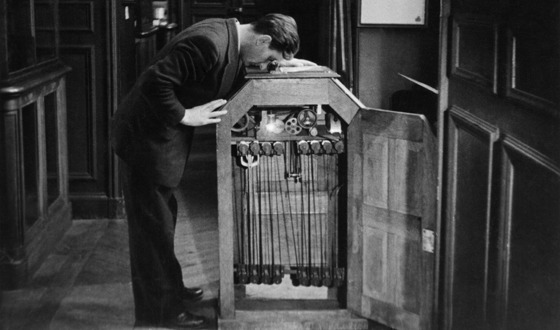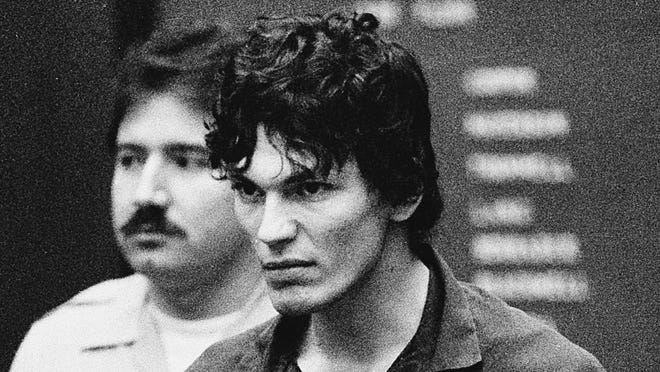
Princess Diana dies in a car crash
Shortly after midnight on August 31, 1997, Diana, Princess of Wales—affectionately known as "the People’s Princess"—dies in a car crash in Paris. She was 36. Her boyfriend, the Egyptian-born socialite Dodi Fayed, and the driver of the car, Henri Paul, died as well.
Princess Diana was one of the most popular public figures in the world. Her death was met with a massive outpouring of grief. Mourners began visiting Kensington Palace immediately, leaving bouquets at the home where the princess, also known as Lady Di, would never return. Piles of flowers reached some 30 feet from the palace's gate.
Diana and Dodi—who had been vacationing in the French Riviera—arrived in Paris earlier the previous day. They left the Ritz Paris just after midnight, intending to go to Dodi’s apartment on the Rue Arsène Houssaye. As soon as they departed the hotel, a swarm of paparazzi on motorcycles began aggressively tailing their car. About three minutes later, the driver lost control and crashed into a pillar at the entrance of the Pont de l'Alma tunnel.
Dodi and the driver were pronounced dead at the scene. Diana was taken to the Pitié-Salpêtrière hospital and declared dead at 6:00 am. (A fourth passenger, Diana’s bodyguard Trevor Rees-Jones, was seriously injured but survived.) Diana's former husband Prince Charles, as well as her sisters and other members of the Royal Family, arrived in Paris that morning. Diana’s body was then taken back to London.
Like much of her life, her death was a full-blown media sensation, and the subject of many conspiracy theories. At first, the paparazzi hounding the car were blamed for the crash, but later it was revealed that the driver was under the influence of alcohol and prescription drugs. A formal investigation concluded the paparazzi did not cause the collision.
Diana’s funeral in London, on September 6, was watched by over 2 billion people. She was survived by her two sons, Prince William, who was 15 at the time, and Prince Harry, who was 12.
AMERICAN REVOLUTION
1777
Sam Mason survives Native American attack
Samuel Mason, a Patriot captain in command of Fort Henry on the Ohio frontier, survives a devastating Native American attack on August 31, 1777. The son of a distinguished Virginia family, Samuel Mason became a militia officer and was assigned to the western frontier post of Fort.

COLD WAR
1980
Polish government signs accord with Gdansk shipyard workers
On August 31, 1980, representatives of the communist government of Poland agree to the demands of striking shipyard workers in the city of Gdansk. Former electrician Lech Walesa led the striking workers, who went on to form Solidarity.

CRIME
1888
Jack the Ripper’s first victim murdered
Prostitute Mary Ann Nichols, the first known victim of London serial killer “Jack the Ripper,” is found murdered and mutilated in the city’s Whitechapel district. London saw four more victims of the murderer during the next few months, but no suspect was ever found.

INVENTIONS & SCIENCE
1897
Thomas Edison patents the Kinetograph
Thomas Edison receives a patent for his movie camera, the Kinetograph. Edison had developed the camera and its viewer in the early 1890s and staged several demonstrations. The camera was based on photographic principles discovered by still-photograph pioneers Joseph Nicephone.

INVENTIONS & SCIENCE
1955
William Cobb demonstrates first solar-powered car
On August 31, 1955, William G. Cobb of the General Motors Corp. (GM) demonstrates his 15-inch-long “Sunmobile,” the world’s first solar-powered automobile, at the General Motors Powerama auto show held in Chicago, Illinois.
.jpg)
U.S. PRESIDENTS
1935
FDR signs Neutrality Act
On August 31, 1935, President Franklin D. Roosevelt signs the Neutrality Act, or Senate Joint Resolution No. 173, which he calls an “expression of the desire…to avoid any action which might involve [the U.S.] in war.”

ART, LITERATURE, AND FILM HISTORY
1928
Bertolt Brecht and Kurt Weill’s "The Threepenny Opera" premieres in Berlin
Die Dreigroschenoper (The Threepenny Opera) receives its world premiere in Berlin on August 31, 1928. “I think I’ve written a good piece and that several numbers in it, at least musically, have the best prospects for becoming popular very quickly.”

NATURAL DISASTERS & ENVIRONMENT
1886
Earthquake shakes Charleston, South Carolina
An earthquake near Charleston, South Carolina, on August 31, 1886 leaves more than 100 people dead and hundreds of buildings destroyed. This was the largest recorded earthquake in the history of the southeastern United States.

CRIME
1985
Los Angeles mob attacks "Night Stalker" serial killer
Richard Ramirez, the notorious “Night Stalker,” is captured and nearly killed by a mob in East Los Angeles, California, after being recognized from a photograph shown both on television and in newspapers.

WORLD WAR I
1916
American soldier Harry Butters killed in the Battle of the Somme
On August 31, 1916, Harry Butters, an American soldier serving in the British army during World War I, is killed by a German shell during the Battle of the Somme, while fighting to secure the town of Guillemont, France.

Comments
Post a Comment